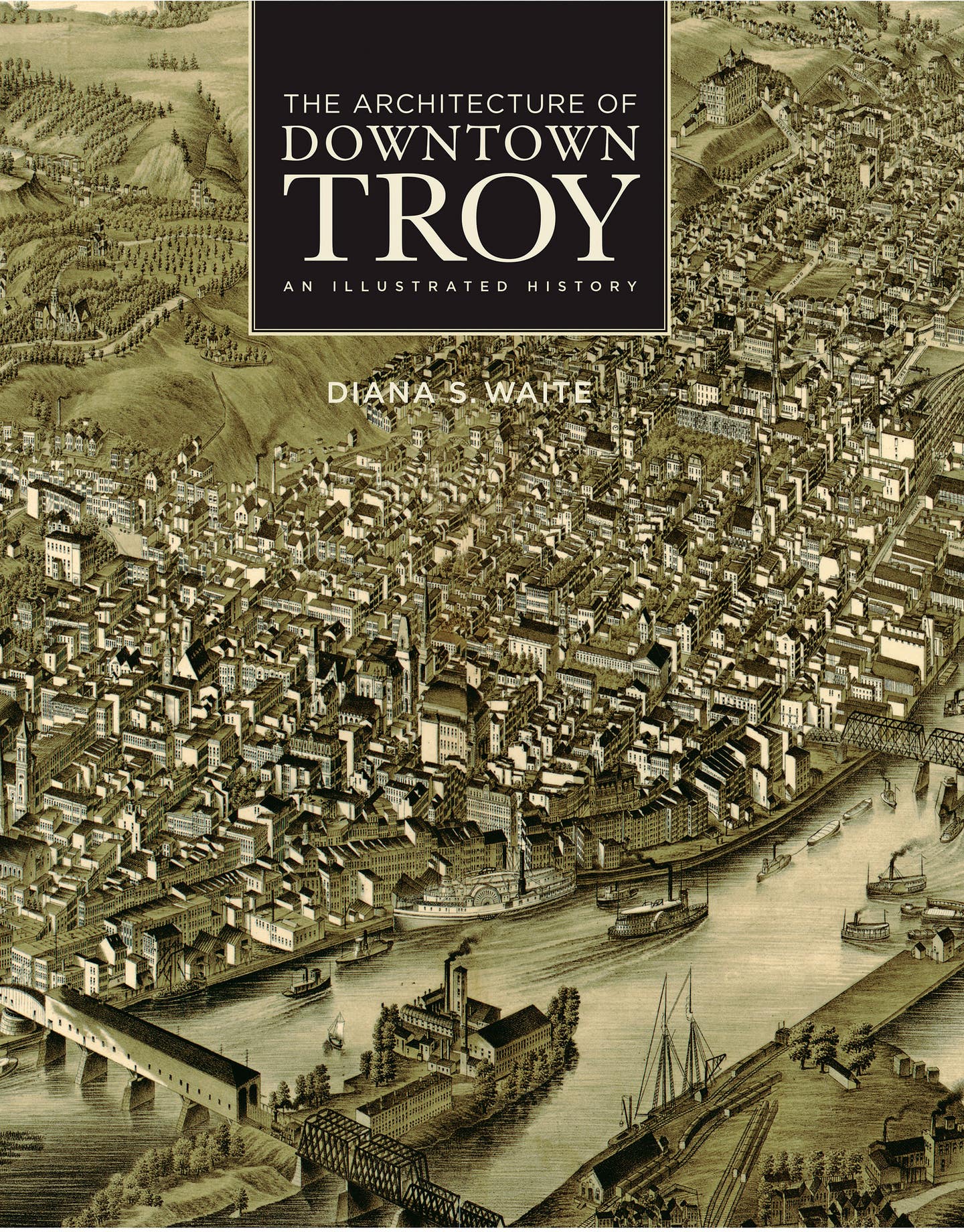
Features
Book Review: The Architecture of Downtown Troy
As an Amazon Associate, we earn from qualifying purchases made through affiliate links.
The Architecture of Downtown Troy: An Illustrated History by Diana S. Waite
September 2019
State University of
New York Press, Albany
Excelsior Editions Hardcover
Diana Waite doesn’t waste any time or print to get straight to the human interest that lies at the heart of the study of architectural history in The Architecture of Downtown Troy: An Illustrated History. Ten years in the making, Waite and her colleagues scoured historical society collections, newspaper articles, and advertisements as well as the Historic American Buildings Survey to tell a tale of Troy, New York’s downtown.
Waite finds pertinent details about craftsmen and building material sources and places that information alongside the stories of the well-to-do who funded Troy’s architectural legacy and the generations of architects and master builders who were commissioned to bring stature to this growing city. In so doing, she makes us care about Troy and the people who built it and leaves us longing to learn more: more about its people and buildings and more about the American architectural experience that reveals the visionary intent that went into building the entire nation.
The story is diverse: multi-national, multi-ethnic and, in some cases, multi-generational, like father and son architects Marcus F. Cummings and Frederick M. Cummings. She reminds us that great architecture and communities are built not by one individual but by countless workers, different classes, and different professions. She includes the information we would expect in a fine architectural history: historic images of lost buildings, maps, historic drawings, and contemporary images of surviving buildings. But her narrative goes way beyond architectural descriptions, with an engaging chronological story of how different people directed the evolution of Troy.
From the framing of the meetinghouse in 1792 by five local contractors to the work of the likes of Richard Upjohn, George B. Post, and Reed and Stem, Troy thrived until the early 20th century and demanded great buildings to reflect its industrial leadership in the production of items as diverse as shirt collars and cast iron. Initially through shipping and later as a rail hub, goods were shipped and purchased around the globe with the resulting wealth reflected in a vibrant downtown.
Waite initially hoped to focus on the 19th-century but added 20th-century buildings because they could not be overlooked despite Troy’s struggles in the 20th century. She laments not having enough time and space to write about the areas adjacent to the downtown in hopes of inspiring other historians to research them. Until then, she has produced a readable, well-illustrated history that should be read by anyone who values an understanding of American architectural history.
Judy L. Hayward spends her days pursuing a passion for historic architecture and the ways in which it can be reused to sustain and grow healthy communities. She develops courses in partnership with builders, architects, traditional craftspeople and others to teach both historic preservation and traditional building skills. She has one foot in the nonprofit world as executive director of Historic Windsor and the Preservation Education Institute and the other foot in the world of media and information services as education director for the Traditional Building Conference Series and Online Education Program.









